What China Wants: Today, the South China Sea. Tomorrow, Everything Under Heaven
By Stephen Wilson LetsFixThisCountry.org
As America divines China's future intentions, we are hearing about tianxia. In his speeches and comments, China's president Xi Jinping has made luminous statements such as "the world is united and all under heaven are one family" much as other politicians do, suggesting the global family of man, and has expressed justifiable pride in the "rejuvenation of the Chinese nation” as his government engages in China's massive Belt and Road Initiative, linking nations economically by land and sea.
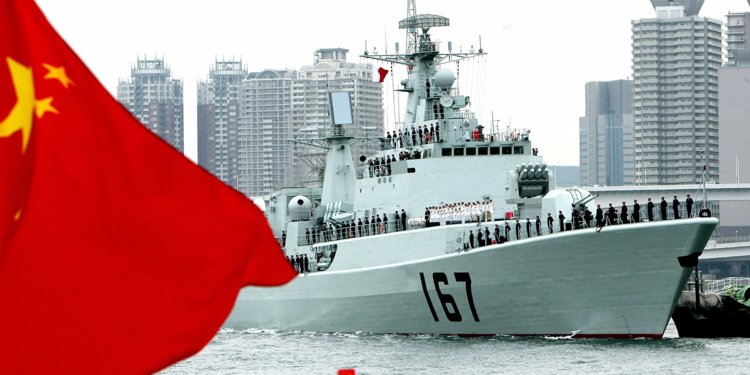
But China scholars hear overtones of something more worrisome in his "Chinese Dream" or in his "One World, One Dream” theme of the 2008 Summer Olympics in Beijing. These motifs are suggestive of tianxia, an ancient Chinese concept of a world order with the emperor at its center — a hierarchical structure wherein other states were obliged to recognize China's supremacy. The literal translation of tianxia is "under heaven"; Chinese emperors claimed the Mandate of Heaven, that they held dominion over “All Under Heaven.”
Gordon Chang, writing in the Wall Street Journal, says Mr. Xi has had his foreign minister explain in the media the president's "thought" — which for the Chinese is more like a doctrine — thought that has "transcended the traditional Western theories of international relations for the past 300 years”. That is an explosive statement. Mr.Chang believes it almost certainly refers to the 1648 Treaty of Westphalia, which put an end to protracted wars by establishing the sovereignty of states that continues to be the established international order today. Chang says President Xi has for more than a decade "been dropping audacious hints that China is the world’s only sovereign state". Xi last year had China's constitution stripped of its two-term limit, putting him in the position of potentially ruling for life to follow through with his thought, which sweeps aside other nation's notions of sovereignty in deference to his global imperial vision.
China's Lake
And he has made an audacious start. First drawn in 1947, a "nine dash" line has appeared on Chinese maps (and now even in currently issued passports) that rings the South China Sea, bespeaking a view that the sea belongs to China, and presaging the annexation that has now occurred. The United States and other nations have done little other than watch the rapid takeover of its rocks, reefs and shoals. Long disputed ownership of these outcroppings between neighboring countries such as Vietnam and the Philippines has been brushed aside while China transformed this geography into artificial islands, declaring ownership for itself.
The U.S. has for decades sent its warships to transit the South China Sea as a proclamation of freedom of navigation of all oceans and seas. We refuse to consider the islands to be Chinese territory. Our ships make that point by repeatedly passing within maritime law's 12-mile zone that demarcates legitimate possession while Chinese ships confront us telling "leave immediately", that our passage is "provocative behavior".
Four years ago, Xi Jinping stood beside President Barack Obama in the Rose Garden and pledged that these newly-created islands would not be militarized, then promptly broke the pledge, saying it is a security matter caused by the temerity of the U.S. not staying out of the South China Sea. The islands now have army barracks, radar installations, missile launchers, and airstrips capable of handling from fighter jets to heavy-lift cargo transports. This has been accomplished with extreme rapidity, before nations such as our own even thought to do anything to prevent it.
Outward Ripples
The nine-dash line embracing the South China Sea is only the beginning of China's ambitions. Successive semi-circular dash lines extending eastward into the Pacific also show up on Chinese maps like dreamed-of spheres of influence. A "second island chain", seen in the map, embraces even the American territory of Guam, a key military base. A "third island chain" reaches into a Pacific where the United States has unchallenged naval supremacy, running from America's and Russia's Aleutian Islands in the north, and, in unofficial Chinese military literature, south to the Hawaiian Islands.
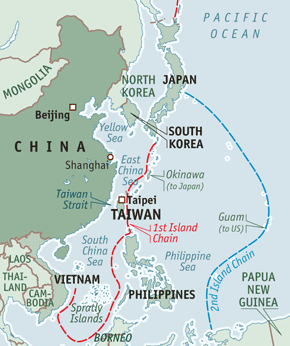
The U.S. has read these notations as China's desire to drive our navy out of the western Pacific, leaving it for Chinese ships to take up the role of safeguarding the shipping lanes. But we are learning that China's ambitions go well beyond "peaceful rising".
The Chinese navy is an adjunct of the People's Liberation Army (PLA) with "N" tacked on for the navy to make "PLAN". Emphasis on the navy is relatively new. China's military doctrine has pivoted from "the traditional mentality that land outweighs sea", replaced by “great importance has to be attached to managing the seas and oceans" and the realization that the China Dream of national rejuvenation is dependent on a global naval capability.
With 330 surface ships and 66 submarines, the PLAN is already larger than the U.S. Navy's 211 surface ships and 72 submarines. Its shipbuilding continues at a blistering pace. With a production rate five times that of the U.S., China built more than 100 warships and submarines in the last decade alone, more than the entire naval fleets of all but a handful of nations. Their navy is forecast to number 550 ships by 2030.
President Trump has promised a 355-ship navy, with the Navy itself budgeting for that total by 2034. In fiscal 2020, 12 new battle force ships are planned; each takes years to build.
Xi Jinping has given the PLA until 2020 to be ready to invade Taiwan. In April 2018, the PLA engaged in its largest ever attack exercises in the Taiwan Strait, with live-fire exercises. Nuclear-capable aircraft circled the island repeatedly. Some 10,000 personnel, 76 fighter jets, 48 naval vessels, a nuclear powered submarine, and China's first carrier participated. The air force, or PLAAF, routinely sends its bombers to threaten Japan, Guam, and other Southeast Asian nations. In March 2018, the PLAAF sent six bombers and a reconnaissance aircraft through the Miyako Strait into the western Pacific on a long-range mission that the U.S. regards as almost certainly a rehearsal for strikes on Guam, as well as an equivalent mission aimed at Taiwan.
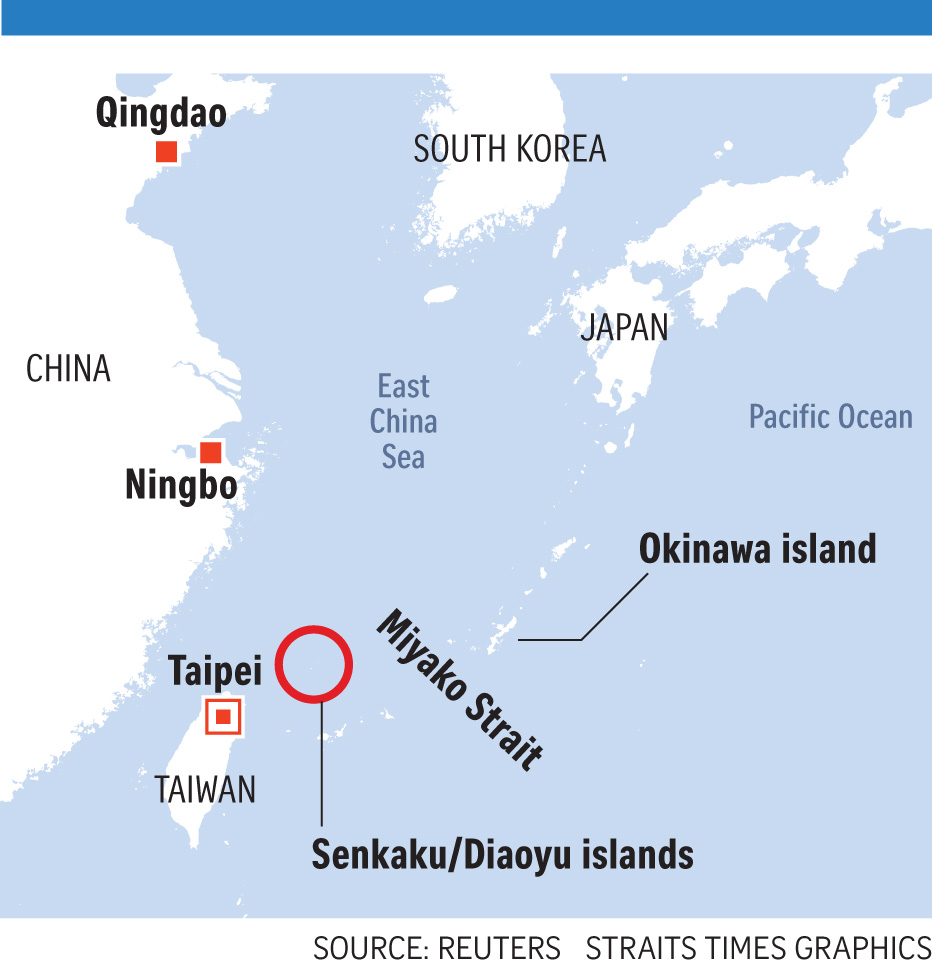
PLAAF aircraft now fly south of the 27 degree north latitude line that Japan considers its protective perimeter of their Senkaku Islands. The U.S. took no action in either incident, which has caused concern by the Japanese and Taiwanese that the U.S. could prove to be an unreliable defender.
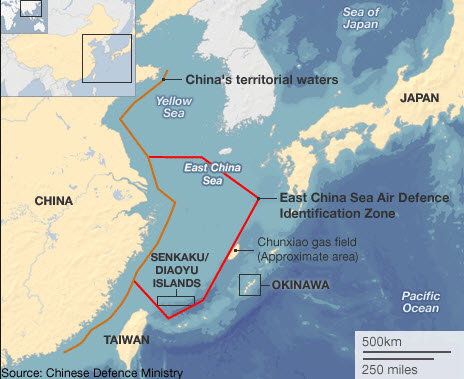
East of Taiwan and west of Okinawa, seven hours by boat from Japan but still further from China, the Senkaku Islands in the East China Sea are but five islets and three barren rocks populated only by feral goats. They are controlled by Japan, but China is laying claim, likely intending to build them out much as it did with similar projections in the South China Sea. In November 2013, China declared an "air defense identification zone" over the Senkakus. All aircraft entering the zone were required to self-identify. The U.S. acquiesced by advising commercial airlines to comply, which was viewed as a mistake.
China adamantly regards Taiwan as part of China proper; it is sure to invade. To head off an invasion of Taiwan or the Senkakus, the U.S. would have to strike preemptively to disable China's A2/AD network (“anti-access/area denial” revealingly called “counter-intervention” by the Chinese). That would require a major commitment of forces to strike targets inside Chinese territory, such as ground-to-air missile batteries and command, control, intelligence, surveillance and reconnaissance nodes, which would probably result in heavy losses for the Americans, an operation with risk so large as to make it infeasible.
Blue Water
China's navy has been venturing far from shore into ocean operations over the last 15 years and have shown the ability to conduct successful military campaigns within the first island chain, which includes Taiwan and the Senkakus. While cutting back their army by 300,000 to 2 million, China has recruited an unheard of total of 100,000 marines. Just as the U.S. posts forces around the world, some of those marines will likely be dispatched to places such as the PLAN base in Djibouti or Gwadar, Pakistan. But clearly, China's navy is developing a plan particularly well-suited to seize islands, supporting those marines with guided-missile destroyers while fending off interference with anti-ship cruise missiles that already give our navy pause in deciding to intervene against a Chinese amphibious operation.
Chinese marines recently conducted amphibious assault exercises in the South China Sea using amphibious dock landing ships, air cushion landing craft, and shipborne helicopters. "This type of training is ubiquitous across the East and South China Seas and is the most tangible evidence of the PLA's preparation to conduct such a mission", says Captain James Fanell in an article in the Naval War College Review, from which a number of facts and observations are drawn for this piece. One can envisage a long-range plan to overwhelm one after another island in the Pacific, this time with no United States willing or able to extricate them as in World War II.
To bring those marines ashore, China has 56 amphibious warships ranging from World War II style LST landing craft to a new design of large amphibians that can hold four of its new air-cushion landing craft, four or more helicopters, armored vehicles, troops, and once ashore, act as docks. This Yuzhao-class landing ship is apparently not enough. A new class is being constructed designed to combat an opposed landing with an ability to carry up to 30 helicopters that can be launched six at a time to deliver boots to ground. Landing ships have one purpose and their emphasis makes the unmistakable statement that China intends to invade and take permanent possession of islands.
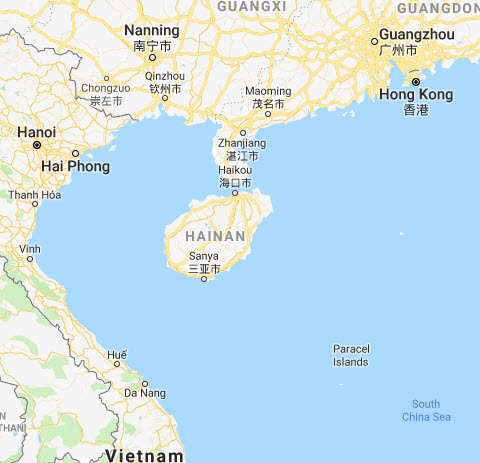
To dissuade the U.S. from interfering, the Chinese have concentrated on long-range anti-ship missiles. The DF-21D , with a range of 1,000 miles, were it deployed to Hainan Island, would reach every part of the South China Sea. The DF-26, with a range of 2,300 miles, could menace ships and bases as far away as Guam. To prevent America from operating close to China’s shore, a bristling arsenal of land-based air-defense and anti-ship missiles, along with fast missile boats, missile submarines and maritime strike aircraft, would attack U.S. Navy vessels, as well as U.S. bases in Guam and Japan. A shower of missiles could send one of our Nimitz class nuclear carriers to the bottom with its 5,000 souls on board and its 90-or-so planes. The United States Navy has never faced such a threat before.
Having frozen any U.S. naval attempt to intercede, with American carriers pushed well beyond the un-refuelled range of aircraft such as the F-35 stealth fighter, China will be unhindered in its island assaults.
Tomorrow, the World
China has engaged in a worldwide program to establish ports and bases for its merchant marine and navy. It has built a naval base in Djibouti in from the Horn of Africa at the choke point at the southern end of the Red Sea, leading to the Suez Canal. Another naval facility and major port access is at Gwadar, Pakistan, a commanding position at the top of the Arabian Sea.
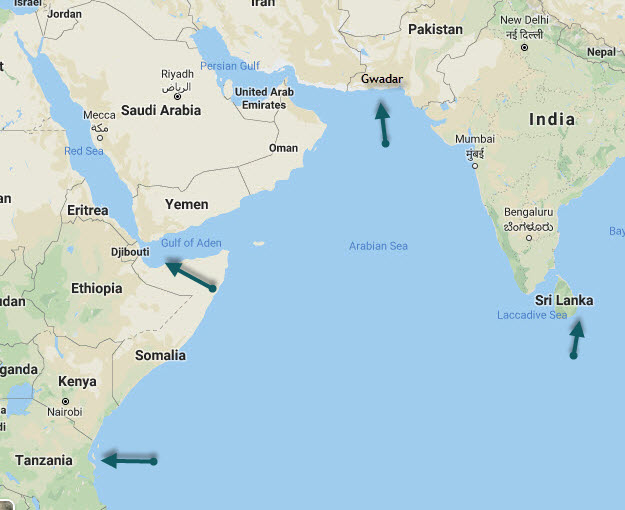
China signed a secret agreement with Cambodia that allows its military to use a naval base on the country's southwest coast on the Gulf of Thailand. Cambodia called it "fake news".
Under the guise of the Belt and Road Initiative, which poses as entirely commercial, China is building commercial ports in India, another in Pakistan near the Iranian border, and has obtained leases in Tanzania on the east coast of Africa. In Namibia on the Atlantic, where a hundred thousand Chinese immigrants now live, it has created a peninsula the size of 40 baseball fields with 600-meter berths for container ships. It has approached Vanuatu in the South Pacific about building a facility, which the island's government denies.
China has been scouting berthing in the Azores, a third of the way to the U.S. from Portugal. A Chinese company paid $924 million in 2017 for a 90% stake in Brazil's most profitable port. Another bought a controlling interest in a second Brazilian port. They offered to build three airports in Greenland until then-Defense Secretary James Mattis confronted Denmark — which controls Greenland as a territory — insisting that it must not allow a Chinese incursion into the North Atlantic.
They may be commercial ports in name, but they are built to military specifications. So are Chinese merchant marine ships. Since 2015 they have been required by Chinese laws to follow military specs. The fact is that the merchant marine is an extension of Chinese power on the seas. It was a merchant marine vessel that threatened Vietnamese boats protesting a Chinese rig poaching oil in Vietnam's "exclusive economic zone", the 200 nautical mile extension into the sea bordering a country in which it has sole rights to its resources.
One study says only 6 of 15 port projects are profitable. That profit doesn't matter reveals their higher purpose. Belt and Road is following a "first civilian, later military" approach, creating a network of facilities designed for refueling and repair of roaming Chinese warships. Laws oblige Chinese transportation firms to provide for the needs of Chinese navy vessels.
The ports are not gifts. They are loans. Countries that have eagerly signed on to these development projects have paid no heed to their inability to repay. In the widely reported case of Sri Lanka, their inability to repay the debt led to China taking 70% equity and control of the port for 99 years. The putatively commercial port has already been used by at least one Chinese surface warship and a submarine. Some nations are slowly awakening to these Chinese "debt traps"; Tanzania has balked at the terms of the planned $10 billion port project north of Dar es Salaam.
Race to the Bottom
The PLAN has conducted oceanographic research from the East and South China Seas, to the Indian Ocean, the Pacific within Guam's economic zone, and even the Atlantic. The professed purpose is scientific, but there is little doubt that China is mapping the ocean floor. This will enable the submarine fleet to break out from the island chains into the Pacific and Atlantic, where they will have the capability to launch their nuclear-tipped missiles against the U.S. mainland.
While America Sleeps
Back in 2018, when Devin Nunes (R-Ca) was still its chairman, Captain Fanell, referred to above, testified these same warnings before the House Intelligence Committee. The public heard nothing about it. No pickup in the media. And Nunes found it more important to preoccupy the committee with the Steele Dossier and its investigation of the FBI.
But then, Americans are generally complacent. They assume the dominance of their military. There is little realization of China's unmistakable plan for world domination, scant awareness of the headlong buildup of its navy, no awakening at all that that the U.S. could lose a war against China with nothing thereafter to challenge a new hegemon that believes tianxia is its destiny, that all "under heaven" must acknowledge China as leader of the world.
There's more at letsfixthiscountry.org
|
THE NEW STREAMLINED RSN LOGIN PROCESS: Register once, then login and you are ready to comment. All you need is a Username and a Password of your choosing and you are free to comment whenever you like! Welcome to the Reader Supported News community. |
ARTICLE VIEWS: 1397
MOST RECENT ARTICLES
|
Monday, 30 August 2021 |
|
Sunday, 29 August 2021 |
|
Sunday, 29 August 2021 |
|
Sunday, 29 August 2021 |
|
Saturday, 28 August 2021 |
|
Thursday, 26 August 2021 |
|
Thursday, 26 August 2021 |













